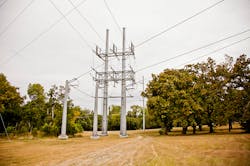Carroll Electric Cooperative Corporation (CECC) sees right of way vegetation management as a way to assure reliable electrical service and reduce costs.
With customers in northwest Arkansas and southwest Missouri, CECC maintains nearly 9,200 miles of power lines. Much of that transmission and distribution infrastructure rolls through heavily wooded, rugged terrain. The total maintenance area is more than 25,000 acres.
Seeking to minimize outages and maximize maintenance efficiency, CECC and Finley Engineering recently analyzed the cost of using herbicides in an integrated vegetation management (IVM) program versus a mechanical-only vegetation control program. The bottom line: savings of $50 million to $70 million with a herbicide-based IVM plan, compared with labor-intensive mechanical vegetation control on a five- to six-year maintenance cycle. Find the full report, Cost Analysis for Integrated Vegetative Management Plan, at the CECC website.
Engineers who prepared the CECC report noted that mechanical cutting tends to increase stem counts by 35 percent, leading to more incompatible vegetation challenges over time. Using herbicides that control the entire plant, including roots, reduces stem counts by 35 to 50 percent, which allows compatible vegetation to become established. As a result, mechanical control costs climbed in each successive cycle, while herbicide costs dropped.
The study also considered the additional time it takes crews to reach outage sites when fallen trees impede access. Assuming that one-quarter of the 4,238 outages recorded by the CECC in 2009 presented an access issue due to incompatible vegetation, merely an additional half hour of crew time to clear vegetation at each outage site would have represented 541 hours throughout the year. Apply an estimated crew rate of $237.50 per hour and that totals an annual cost of $128,487.50.
The CECC findings were consistent with other studies, including a Northern Kentucky University report, Assessment of Frequent Cutting as a Plant Community Management Technique in Power Line Corridors, completed, nearly 25 years ago with less-efficient herbicides than those available today.
DuPont Land Management partners with vegetation managers and utility foresters to create sustainable solutions that improve safety, productivity and reliability for the businesses and communities they serve. Contact your local DuPont representative or visit landmanagement.dupont.com to learn more.

